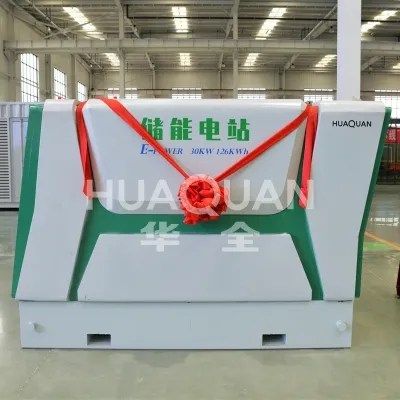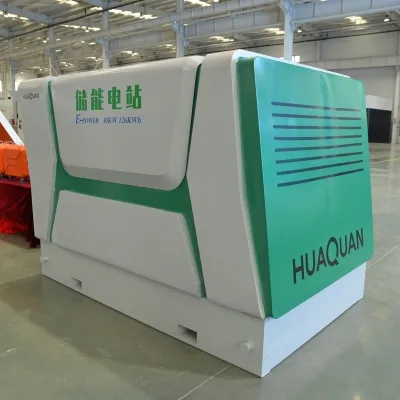
With the rapid development of the new energy industry,
Container Energy Storage Stations have become a hot spot in the market due to their flexible deployment and efficient energy storage characteristics. However, energy storage equipment technology is complex, and neglecting core parameters when selecting may lead to low return on investment, safety hazards, and other issues. This article analyzes the five key indicators for selecting container energy storage stations from the perspectives of technical parameters, safety performance, and operation and maintenance costs, to help you avoid purchasing traps.
1、 Why should we be cautious when choosing container energy storage stations?
As the core equipment for new energy generation, grid peak regulation, distributed energy and other scenarios, the performance of container energy storage stations directly affects project revenue and safety. However, the quality of products in the market varies greatly, and some manufacturers may falsely label parameters or use inferior materials in order to reduce costs. Therefore, when making a purchase, it is important to focus on the following 5 core parameters to ensure that the device performance is consistent with expectations.
2、 Guide to choosing and avoiding pitfalls: These 5 parameters must be considered!
**1. Core parameter 1: Battery system performance (energy density and cycle life)
Energy density: directly determines the energy storage capacity. High energy density batteries, such as lithium iron phosphate batteries, can reduce footprint and improve energy storage efficiency per unit volume.
Cycle life: reflects the number of times the battery is charged and discharged. Generally, it is required to have a lifespan of at least 6000 cycles to ensure a service life of more than 10 years.
Avoiding pitfalls: Beware of manufacturers falsely labeling parameters, request third-party testing reports, and confirm whether they include "cycle life decay rate" data.
**2. Core parameter 2: Reliability of BMS (Battery Management System)
Functional requirements: It should have functions such as battery balance management, overcharge/overdischarge protection, and thermal runaway warning.
Verification method: Check whether the BMS has passed international certifications such as UL1973 and IEC62619, and understand its fault warning accuracy (such as ≥ 95%).
Avoiding pitfalls: Some manufacturers use "OEM" BMS, and it is necessary to confirm whether the system is independently developed to avoid maintenance difficulties in the later stage.
**3. Core parameter three: PCS (energy storage converter) efficiency and compatibility
Conversion efficiency: directly affects the revenue of energy storage stations. Efficient PCS (such as ≥ 98.5%) can reduce energy loss and improve economy.
Compatibility: It needs to support both grid connected and off grid modes, and be compatible with multiple battery types (such as lithium batteries and lead-acid batteries).
Avoiding pitfalls: Manufacturers are required to provide efficiency curve graphs of PCS under different operating conditions to avoid only labeling "peak efficiency".
**4. Core parameter four: Security protection level (IP and fire protection design)
Protection level: The container must reach IP54 or above to prevent dust and rainwater from entering.
Fireproof design: using A-level fireproof materials, equipped with gas fire extinguishing system (such as heptafluoropropane) and thermal runaway isolation cabin.
Tip for avoiding pitfalls: Conduct on-site inspections of the prototype, check the structural strength of the cabin and the thickness of the fire-resistant materials, and avoid relying solely on promotional materials.
**5. Core parameter five: Life Cycle Cost (LCOE)
Initial investment: including equipment procurement, installation, and commissioning costs.
Operation and maintenance costs: Long term expenses such as battery replacement, PCS maintenance, BMS upgrade, etc. need to be considered.
Avoiding pitfalls: Require manufacturers to provide LCOE calculation models to compare the total cost of ownership of different brands of equipment, rather than just focusing on unit prices.

3、 Selection decision suggestion: How to comprehensively evaluate suppliers?
Qualification review: Check whether the manufacturer has ISO9001 quality management system certification, energy storage system integration capability certificate, etc.
Case reference: Request to provide on-site operational data of similar projects (such as grid side energy storage, industrial and commercial energy storage).
After sales service: Confirm whether value-added services such as 24-hour response, spare parts inventory coverage, and remote monitoring are provided.
4、 Conclusion: Precise selection makes energy storage investment more reassuring
The selection of container energy storage stations should be based on technical parameters, safety performance as the bottom line, and life cycle cost as the guide. By rigorously verifying the performance of core components such as batteries, BMS, PCS, and comprehensively evaluating supplier qualifications and cases, it is possible to effectively avoid selection risks and ensure the long-term stable operation of energy storage projects.

